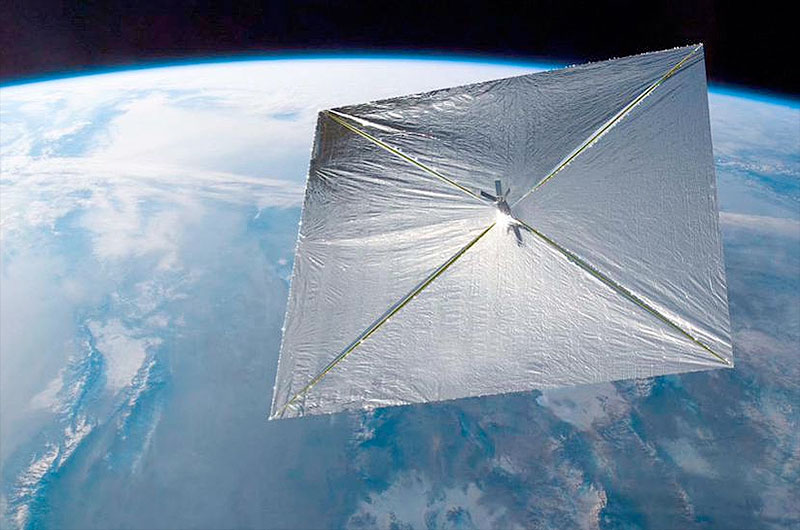
A tiny cubesat has fallen silent in orbit for a second time, just two days before it was supposed to deploy its solar sail.
The nonprofit Planetary Society's LightSail spacecraft has not communicated with Earth since Wednesday afternoon (June 3), shortly after an apparently successful solar-panel deployment, mission team members said.
"Mission managers believe the cubesat's batteries are in a safe-mode-like condition designed to protect the electronics until power levels are safe for operations," The Planetary Society's Jason Davis wrote in a mission update Wednesday evening.
"In an email summary sent [Wednesday] afternoon, mission manager David Spencer said before contact was lost, LightSail’s batteries did not appear to be drawing current from the solar arrays; nor were they properly shunting power to the spacecraft’s subsystems," Davis added.
Engineers are currently trying to figure out exactly what happened, and how to get LightSail, which is about the size of a loaf of bread, back on track.
The battery issue is the second setback for LightSail since its May 20 launch on a mission designed to demonstrate key components of solar-sailing technology. The cubesat initially went silent on May 22, victimized by an apparent software glitch. But LightSail rebooted itself a week later, probably after an invigorating encounter with a fast-moving charged particle.
Mission managers had hoped to deploy LightSail's 344-square-foot (32 square meters) sail today (June 5), but those plans have obviously been put on hold.
Get the Space.com Newsletter
Breaking space news, the latest updates on rocket launches, skywatching events and more!
"When contact with LightSail is re-established, the sail deployment sequence will likely be triggered as soon as battery levels are heathy enough to proceed," Davis wrote.
Solar sails work by harnessing the tiny but continuous push imparted by photons streaming from the sun. The devices hold great promise as a cheap and efficient way to get spacecraft around the solar system, advocates say.
LightSail won't be doing any true solar sailing on this mission, even if the cubesat recovers fully. The spacecraft is on a shakeout flight designed to test out attitude-control and sail-deployment systems ahead of a more involved orbital sailing test with a different LightSail craft next year.
The current LightSail will probably come back to Earth within two to 10 days of sail deployment, pulled down by atmospheric drag, Planetary Society representatives have said.
Follow Mike Wall on Twitter @michaeldwall and Google+. Follow us @Spacedotcom, Facebook or Google+. Originally published on Space.com.
Join our Space Forums to keep talking space on the latest missions, night sky and more! And if you have a news tip, correction or comment, let us know at: community@space.com.

Michael Wall is a Senior Space Writer with Space.com and joined the team in 2010. He primarily covers exoplanets, spaceflight and military space, but has been known to dabble in the space art beat. His book about the search for alien life, "Out There," was published on Nov. 13, 2018. Before becoming a science writer, Michael worked as a herpetologist and wildlife biologist. He has a Ph.D. in evolutionary biology from the University of Sydney, Australia, a bachelor's degree from the University of Arizona, and a graduate certificate in science writing from the University of California, Santa Cruz. To find out what his latest project is, you can follow Michael on Twitter.









